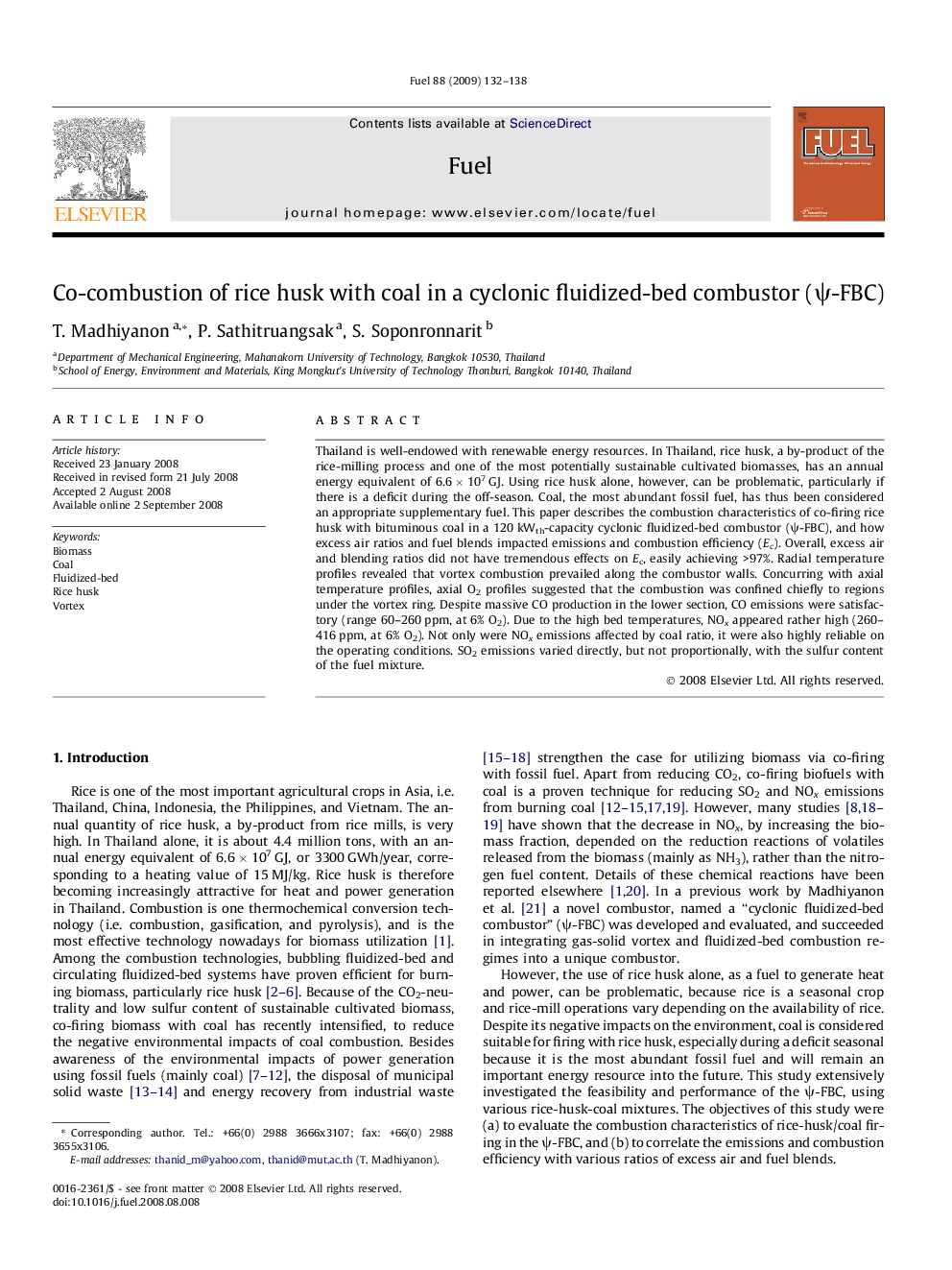| کد مقاله | کد نشریه | سال انتشار | مقاله انگلیسی | نسخه تمام متن |
|---|---|---|---|---|
| 208161 | 461240 | 2009 | 7 صفحه PDF | دانلود رایگان |

Thailand is well-endowed with renewable energy resources. In Thailand, rice husk, a by-product of the rice-milling process and one of the most potentially sustainable cultivated biomasses, has an annual energy equivalent of 6.6 × 107 GJ. Using rice husk alone, however, can be problematic, particularly if there is a deficit during the off-season. Coal, the most abundant fossil fuel, has thus been considered an appropriate supplementary fuel. This paper describes the combustion characteristics of co-firing rice husk with bituminous coal in a 120 kWth-capacity cyclonic fluidized-bed combustor (ψ-FBC), and how excess air ratios and fuel blends impacted emissions and combustion efficiency (Ec). Overall, excess air and blending ratios did not have tremendous effects on Ec, easily achieving >97%. Radial temperature profiles revealed that vortex combustion prevailed along the combustor walls. Concurring with axial temperature profiles, axial O2 profiles suggested that the combustion was confined chiefly to regions under the vortex ring. Despite massive CO production in the lower section, CO emissions were satisfactory (range 60–260 ppm, at 6% O2). Due to the high bed temperatures, NOx appeared rather high (260–416 ppm, at 6% O2). Not only were NOx emissions affected by coal ratio, it were also highly reliable on the operating conditions. SO2 emissions varied directly, but not proportionally, with the sulfur content of the fuel mixture.
Journal: Fuel - Volume 88, Issue 1, January 2009, Pages 132–138